Austin Camilleri questions the radical nature of opposites with a desire to integrate them
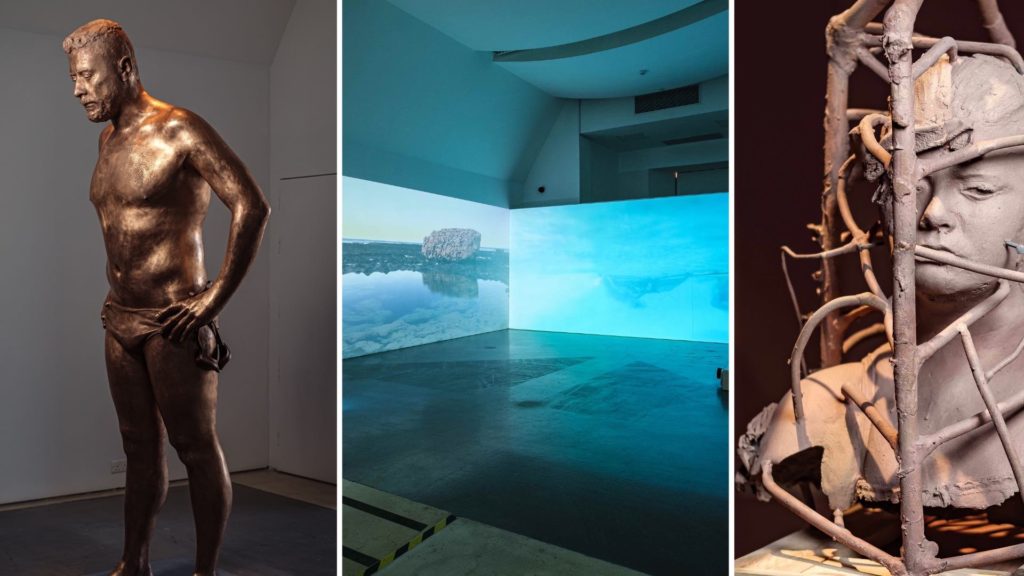
After exhibiting internationally in the partaking of solo shows, and collaborations, the acclaimed artist Austin Camilleri launches his debut show in Malta Le. Iva / Anger is a Lazy Form of Grief, an initiative by Spazju Kreattiv, bringing together a series of works – most of which are new creations. Curated by renowned international curator Rosa Martinez, known for being the first-ever female director of the Venice Biennale in 2005, with the assistance of Italian curator Irene Biolchini, it binds the formidable and the contradictory, integrates contemporary and traditional materials, amalgamates the digital world with that of art history, and dares to break the boundaries between the doubtful artist-self and that of his ego.
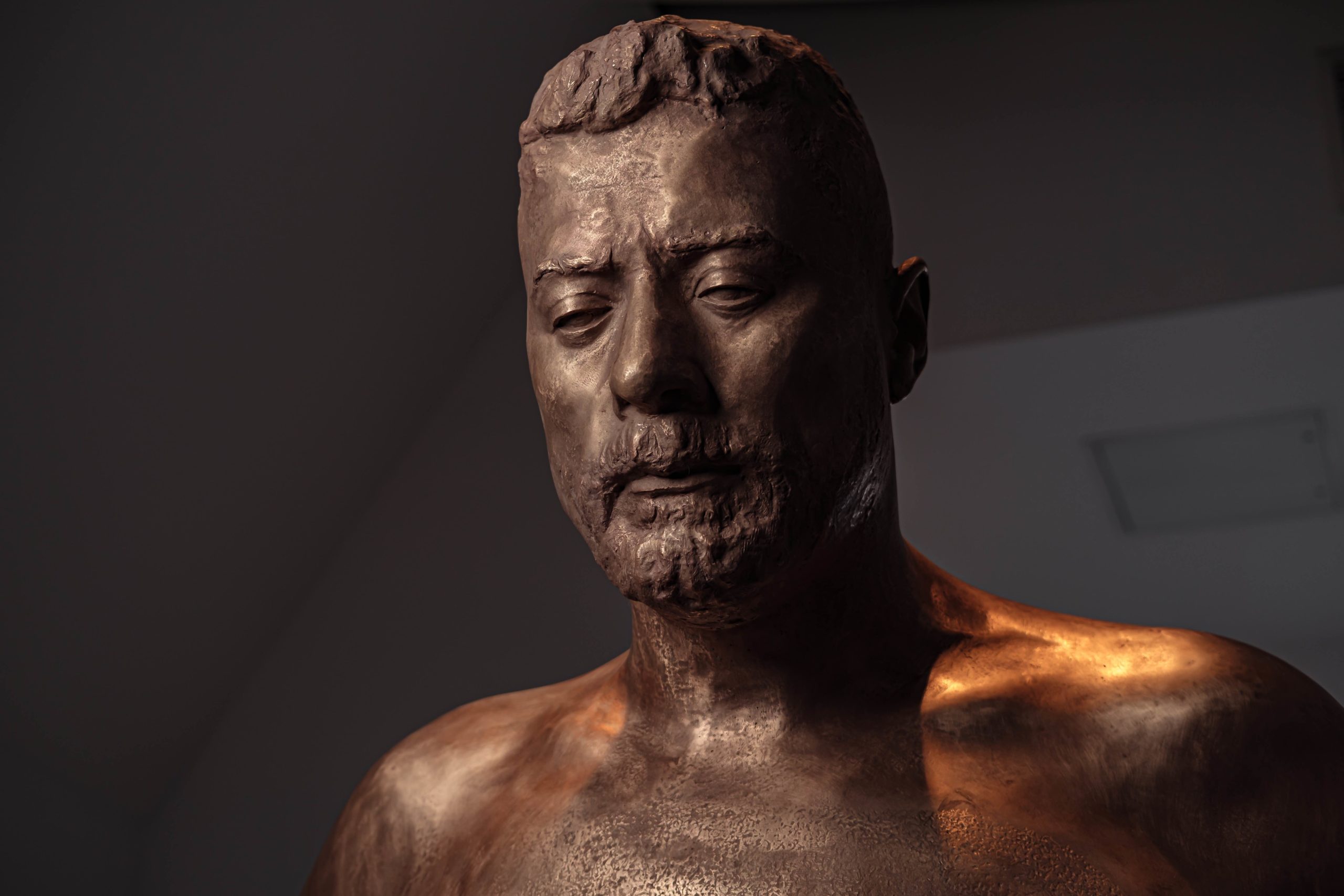


Photo credits : Brian Grech
The exhibition experience resembles that of entering a time machine and returning to an unfamiliar present. There seems to be a multitude of information that is foreign, and overwhelming with an unusual merging of contrasts. The works represent a paradox to that of the exhibition title “NO.YES – LE.IVA.” A deliberate title, it proposes an ideology, where taking a stance is foolish. ‘ ANGER IS A LAZY FORM OF GRIEF’, plays on the frustration and struggles associated with the process of creating; the before “state” of reaching one’s purpose in art. Yet such a motto simultaneously connotes questions related to manifestations of power. It also symbolizes the tug of war correlated to a single-minded attitude. Is there one opinion or the other? And what happens if we synthesize both the “LE.IVA”?

Photo credits : Brian Grech
The enlarged space at Spazju Kreattiv is sectioned into four rooms. In the first room, a work that cannot be overlooked is a larger-than-life-size sculpture of Maltese athlete Neil Agius. LEAP is a cast of the swimmer’s body that was made at the time of his ground-breaking record in 2021; a grand swim across 12.6 kilometers, completed in an estimated fifty-two hours. Inherently a traditional bronze sculpture, it might touch on a sense of godly indications however upon a closer look, Agius’ body seems to be worn down. And with such an antilogy, many questions begin to arise. Is the preceding Olympian representing power or weakness? Has Agius just started or finished the race? The unpatinated sculpture encapsulates a multi-lingual approach, one that coexists with a series of abstract works that compellingly hang on the right side of the room. Seemingly, this work is inspired by his Ghost Trip series created in 2015 in which the use of Magnani and Rosaspina paper are bonded together to tell a story of migrants and their migration from the African continent to Europe. It is a work based on scientific research that commemorates those who unfortunately lost their lives on their way to their destinations. On one part of the paper, the narrative is communicated through overlayered ink decipherable in blue hues. On the other halves, lies the symbolism of tragedy, a practice method of embossing lead spheres from bullet cartridges. These embossments mirror the accurate numbers of shipwrecks and deaths. And just a corner away hung in the corridor adjacent to the first room is Camilleri’s Passport series. A similar methodological approach to the Ghost Trip series, but here Camilleri’s old passports are erased through veneering layers of ink. Its narrative emphasizes the reliance on documentation to form one’s identity, a concept that is non-existent in terms of artistic license.

Photo credits : Brian Grech
In the second room, a distinct setting is visible, giving off a theatrical effect where direct light is imposed on Camilleri’s brilliant technical skills in refining sculpture. Yet ironically, this light focalizes curiously on errors. Camilleri seems to be sharing his secret process with the public. Flaws are embraced through unpolished surfaces and unfinished sculptures, with plaster droppings added arbitrarily to face casts. The display of the unfinished as complete works show to the public a certain provocation of the confinements of art and the artist challenging himself. Boxes as cargo carrying works for his international exhibitions and plaster casts used during the process are all in the public eye taking us a step further into his creativity. In the same room, Homo Immortalis which are ten miniature, finished sculpture works in the taste of Rene Magritte’s, The Lovers, represent a standing point against religious and pop culture associations heavily confined to imagery. And despite this; these busts are veiled and anonymous. It is a threat to our rigid way of thinking, where power should not have a face; therefore, it cannot be judged as good or bad, poor, or rich, or as a villain or hero.
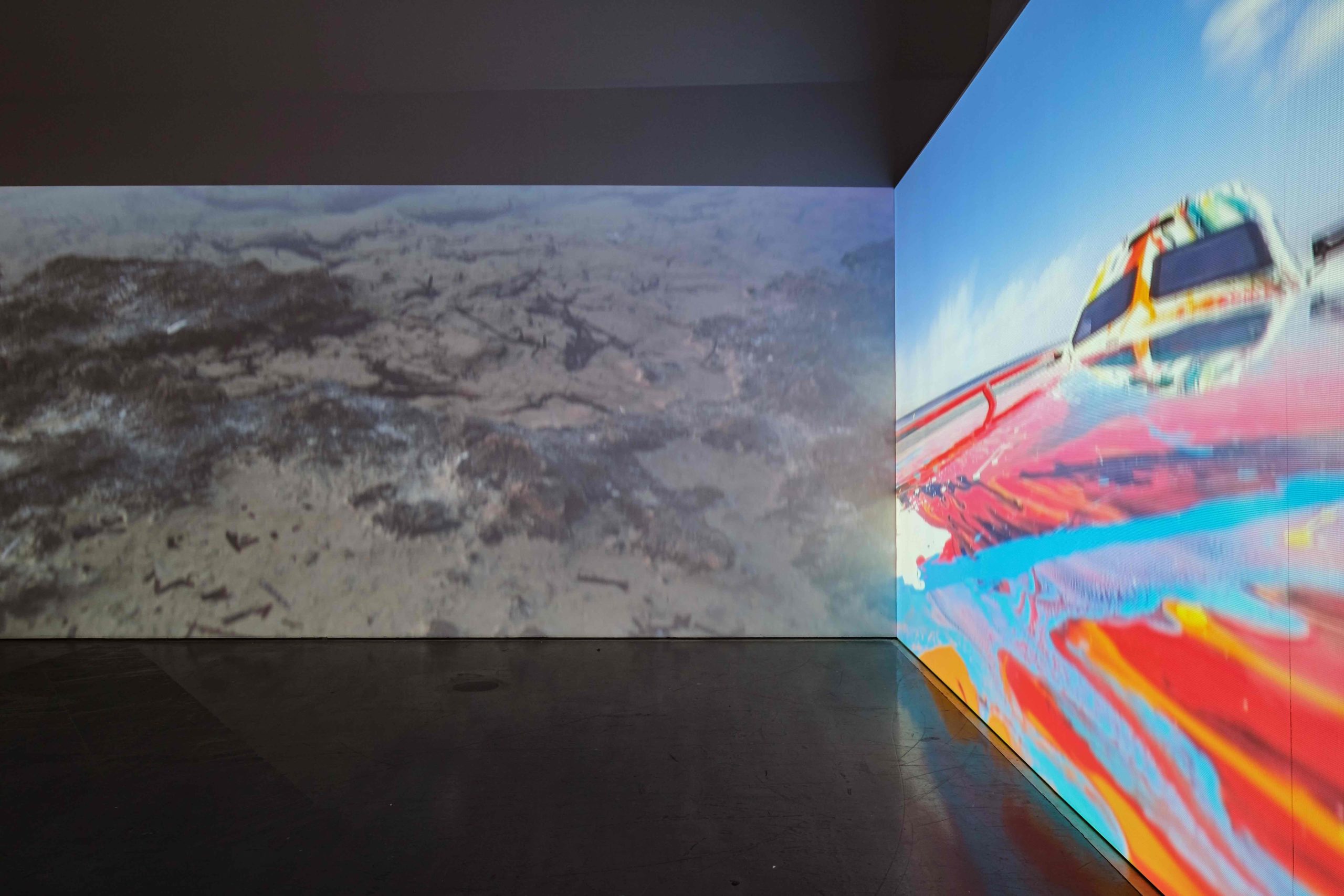

Photo credits : Brian Grech
The abstract works, explicitly those related to migration are metaphorically complementary to Bandiera Bianca and Hope that can be found in the third room. Nietzsche’s quote, “There are no beautiful surfaces without a terrible depth” seems like an appropriate mention to the works and their context. Bandiera Bianca, two videos with one a tranquil capture of a bay in Gozo, hints at the perplexing complexity of the sea and its nature, its calm, and its calamity. The other is a narration of a racing boat who overturned during a race where two divers are caught trying to save the racing drivers by opening the doors of the speedboat. And while all this is happening, a steel propellor acting as a sculpture piece sets the scene of the space. Hope a ready-made, was found in a clandestine ship, and now hangs on the right side of the exhibit wall gilded in gold. Where much like Duchamp art objects; it makes us question the role of art altogether. The propellor also acts as a memorial to anonymous identities and their death at sea, they too who once had faith.


Photo credits : Brian Grech
The photograph in the last room is a documented proposition capturing Republic square in Valletta with its focal point being the digital cut command of the statue of Queen Victoria. A similar approach to the Homo Immortalis, the statue’s erasure advises the public to reflect on the discussion that led to the eradication of colonial imagery. Without such symbols, altering concepts for the better would not be possible. A scaled-down wooden model of the post-colonial Royal Opera House is found in the same room. Its significance as part of a performing act re-enacts a specific historical event; its destruction from the fascists, as it was aerial bombed in 1942. This secluded architectural style where at the time, Baroque architecture was fashionable, shows the mark of a building used to convey a considerable form of power. Power as the source for all war beginnings, where this performance act shines a light on history, and its tendency to repeat itself. Just like nowadays, a pressing event is the happenings of conflict between Ukraine and Russia. The revival and destruction of the model can be seen on three screens in this room, where the video portrays the burning of the model at the foot of the entrance of the now restored Royal Theatre.

A work in Camilleri’s oeuvre that deserves much recognition is his temporary sculpture LEIVA. Cast in aluminium, a twelve-year-old girl takes up an entire space on her own. Placed in a niche, outside the Castellania Palace in Valletta a few days before the exhibition opening, LEIVA is a child who has not yet reached puberty. Previously the Courts of Justice enforced jurisdiction to those who committed a minor offense, subject to public mockery. LEIVA’S intimidating gaze, arms crossed, and her lack of clothing embody the potential of a higher state of consciousness, currently belonging to no class. Its concept, feminist in nature, constitutes to the idea of questioning our patriarchal society. LEIVA is the synthesis of a radical, who encourages the public to think differently and is an act of inspiration to a generation of women to come. LEIVA is the birth of potential, to change the world for the better.

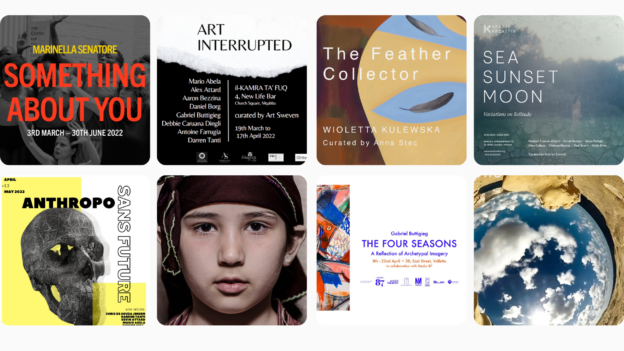

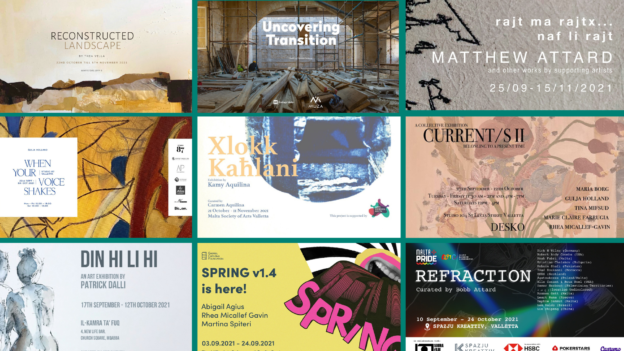

Responses